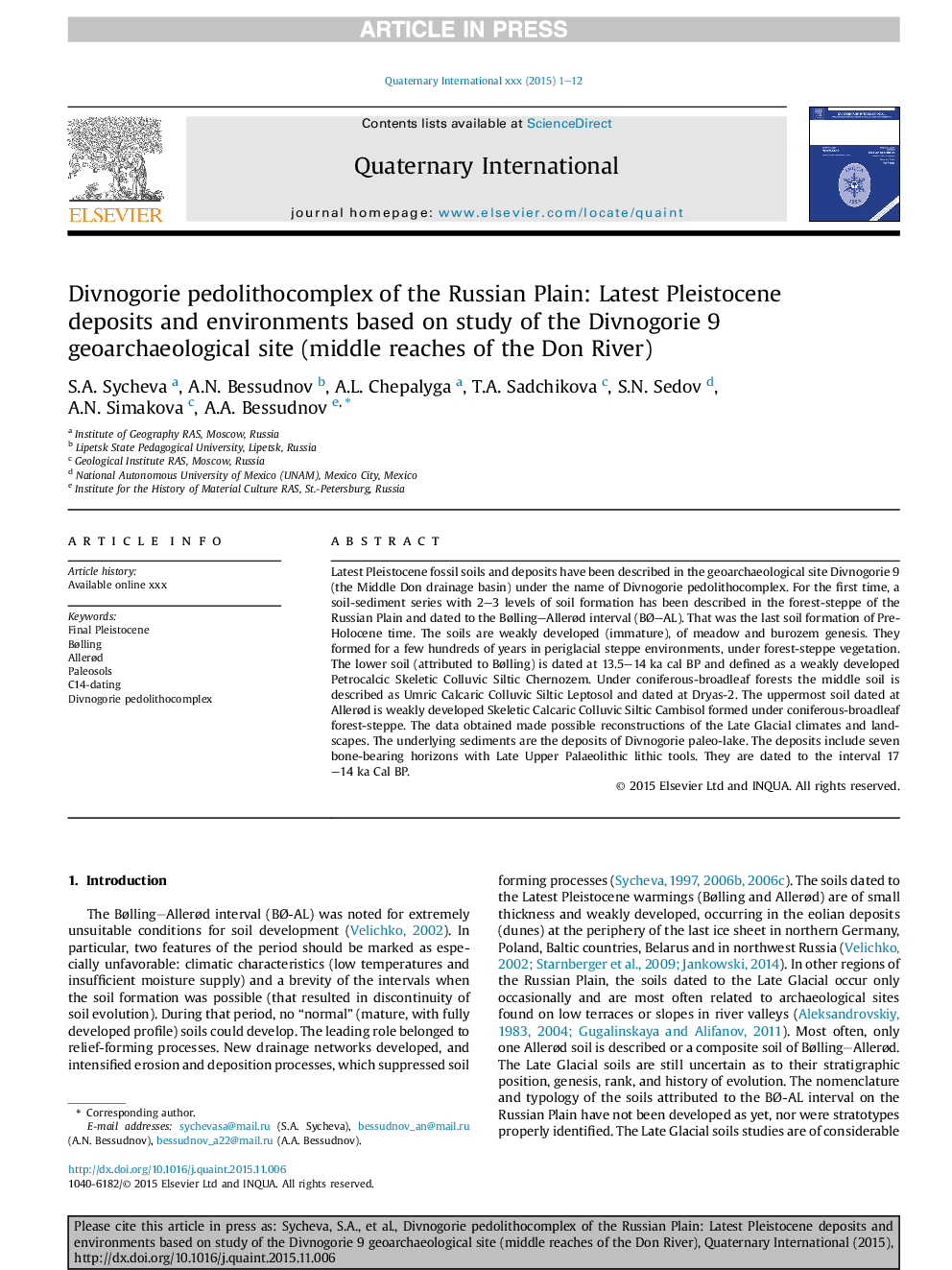| Article ID | Journal | Published Year | Pages | File Type |
|---|---|---|---|---|
| 5114041 | Quaternary International | 2016 | 12 Pages |
Abstract
Latest Pleistocene fossil soils and deposits have been described in the geoarchaeological site Divnogorie 9 (the Middle Don drainage basin) under the name of Divnogorie pedolithocomplex. For the first time, a soil-sediment series with 2-3 levels of soil formation has been described in the forest-steppe of the Russian Plain and dated to the Bølling-Allerød interval (BÃ-AL). That was the last soil formation of Pre-Holocene time. The soils are weakly developed (immature), of meadow and burozem genesis. They formed for a few hundreds of years in periglacial steppe environments, under forest-steppe vegetation. The lower soil (attributed to Bølling) is dated at 13.5-14 ka cal BP and defined as a weakly developed Petrocalcic Skeletic Colluvic Siltic Chernozem. Under coniferous-broadleaf forests the middle soil is described as Umric Calcaric Colluvic Siltic Leptosol and dated at Dryas-2. The uppermost soil dated at Allerød is weakly developed Skeletic Calcaric Colluvic Siltic Cambisol formed under coniferous-broadleaf forest-steppe. The data obtained made possible reconstructions of the Late Glacial climates and landscapes. The underlying sediments are the deposits of Divnogorie paleo-lake. The deposits include seven bone-bearing horizons with Late Upper Palaeolithic lithic tools. They are dated to the interval 17-14 ka Cal BP.
Related Topics
Physical Sciences and Engineering
Earth and Planetary Sciences
Geology
Authors
S.A. Sycheva, A.N. Bessudnov, A.L. Chepalyga, T.A. Sadchikova, S.N. Sedov, A.N. Simakova, A.A. Bessudnov,
